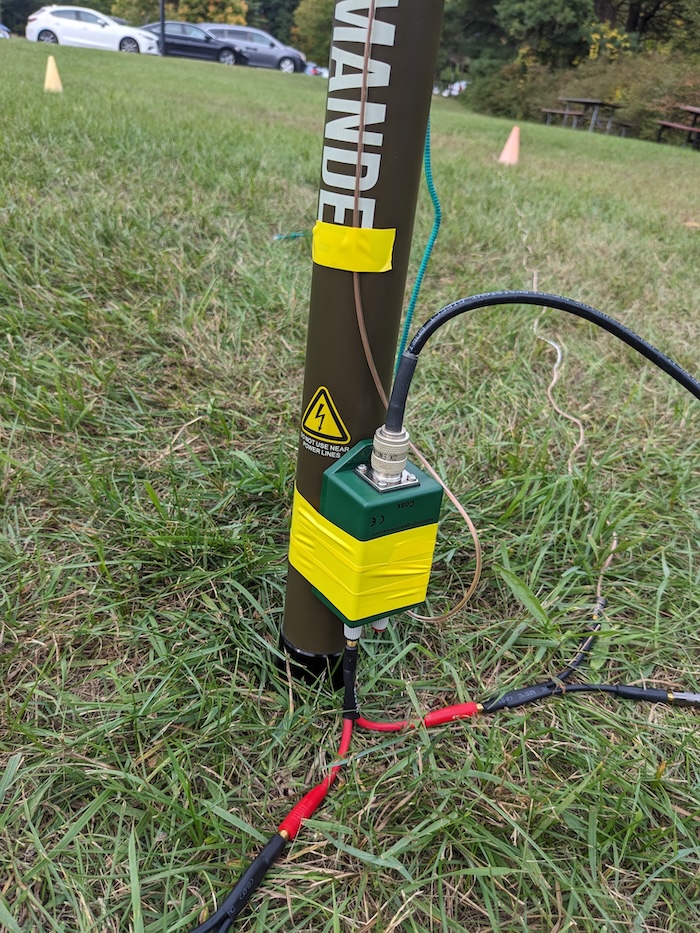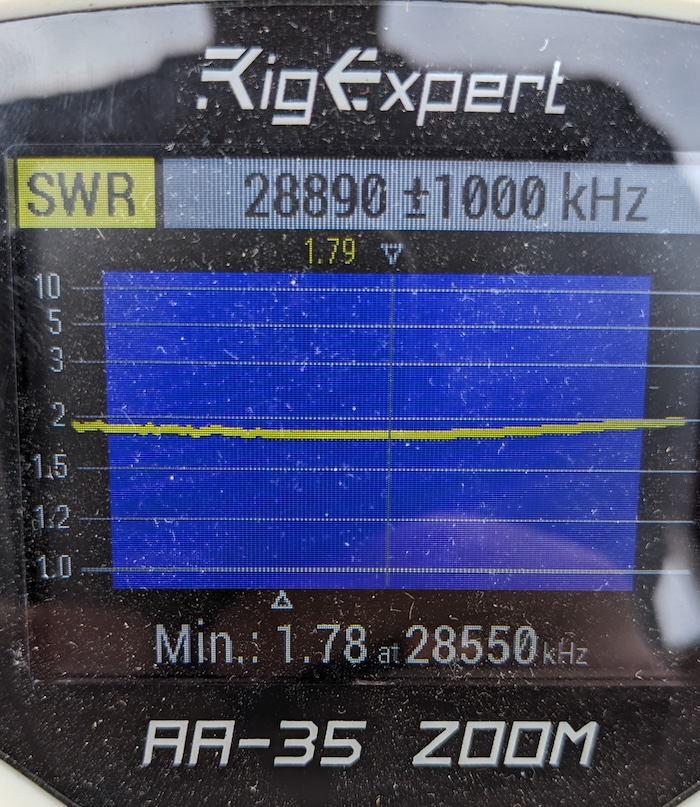I built a Rybakov antenna for POTA

This past weekend (September 28 and 29, 2024) I built a Rybakov antenna to do some Parks on the Air at Minute Man Historical National Park and acheived great results. I’ll share how I built the antenna and show my results. I do have some questions about this antenna and am hoping that some readers will reach out to me and share their thoughts.
Two amateur radio operators who have taught me a lot about antennas and radio operations are Tim G5TM and Walt K4OGO. Both of them have recommended and built Rybakov antennas. I wanted to build one for myself and try it out.
Tim’s video and Walt’s video on the Rybakov antenna
What is a Rybakov antenna?
The Rybakov is a vertical antenna about 25 feet in length with a 4 to 1 transformer. It isn’t a resonant antenna so it requires a matching unit (i.e., antenna tuner) to operate. I use a G90 radio with a great, built-in matching unit so the Rybakov should work well for me.
Building the antenna in the field

Here’s what I used to construct the antenna:
- A DX Commander Expedition pole (10 meters)
- Augmented with pipe clamps with vinyl tubing
- Some ground stakes
- Yellow electrical tape
- A 1 to 4 LDG Unun
- Some inexpensive speaker wire
- Some paracord

I measured and cut the wire to 25 feet.

I added some pipe clamps (or jubilee clips) with vinyl tubes to protect the pole and better support the vertical load. Then I secured it with paracord guylines. I pre-attached three short loops to the top, third clamp so I can easily attach the guy lines.

Consider learning a few useful knots: a square knot, bowline, two-half hitches and midshipmans hitch is all you need. You’ll never need to waste money on fancy rigging or hardware.
If you learn a few useful knots you’ll be able to rig your masts, antennas and guy lines without specialized hardware.

Here’s a picture of a midshipmans hitch. This hitch is adjustable for tension to the guy stakes. I tie two guy lines loosely while the mast is laying on the ground. Then once the mast is lifted, I cinch them up and secure the final third line which keeps the mast in place.
Here’s what the transformer and ground radial assembly at the bottom of the mast look like. I laid out four 13 foot radials, borrowed from my spike mounted quarter-wave whip assembly.

Here you can see the guy lines, radials and the table where I was operating.

Ready to activate
It was a beautiful weekend and I was ready to activate.

I built this antenna two consecutive days, Saturday and Sunday. The second day I built it I was able to get up and running much faster. Practice makes perfect.
On the first day I forgot my Morse code key , a detachable paddle that was with my other radio. So I operated voice in SSB (voice) mode. On the second day I brought my key and operated Morse code (CW) only.
Morse code is more efficient so I was able to reach out a little farther (CA, Brazil) on day two.
As usual I had a busy weekend with family activities. So between the two days I was probably sitting down operating the radio for about two and a half hours.
Here are my CONUS (Continental United States) contacts over those two days.

Both days I started on the 10 meter band and then ended my activation on the 20 meters. Most of the long distance contacts (Belgium, France, Brazil, Mexico) were on 10 meters while the nearer contacts (Ontario, Ohio, Georgia) were on 20. Radio waves are fickle and can surprise you. The Italian contact was on 20 meters.
Radio waves are fickle and can surprise you. The Italian contact was on 20 meters.
Here are my European contacts over the two days.

And I made one contact in Brazil.

Here’s the view from my operating position. I had a nice chat with, Josh, one of the rangers who often says, “Hello”, while I’m working the radio.

And here’s a photo from the parking lot. I had some cones from my youth coaching days and decided to place them near my radials. There was not much traffic in that area of the park. If it had been busy, I would have gone with a lower-profile setup like my KH1.

Performance
As you can see from the map of contacts shown above, this antenna performs really well. I had a lot of fun building it and want to thank Walt and Tim for introducing me to this style of antenna.
I took some readings with my Rig Expert antenna analyzer (which I’m still learning how to use).

SWR at 10 meters looks great.

An SWR of 4.5 at 17 meters is manageable.

The SWR at 20 meters doesn’t look too good. My G90 was able to tune it up and I made a ton of contacts on that band. If it works it works, I guess.

SWR at 30 meters looks manageable as well. I took this reading just before I packed up out of curiousity.
Questions
I’d love to hear from others who’ve made a Rybakov antenna. What was your build like? What was your SWR across different bands? What transformer did you use?
I felt like the SWR on 20 meters was higher than I expected. I’m pretty sure I cut the length correctly at 25 feet. Should I add more radials?
These questions will inspire my future experiments.